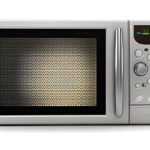With rapid changes in the business arena, commercial office design has become a major contributor. It creates productive work areas, encourages collaboration, and supports brand identity. Thus, an efficiently designed office space will attract top talent, and its role in the well-being and success of employees and organizations cannot be overstated.
The Importance Of Thoughtful Commercial Office Design
Office layout is more than arranging furniture; it’s about creating an environment that reflects an organization’s culture while meeting its operational needs. Thoughtfully designed workspaces can boost productivity by incorporating ergonomic furniture and efficient space layouts, making it easier for staff to perform at their best.
Open spaces and shared areas foster improved collaboration by encouraging chance encounters and idea exchanges among team members. A well-designed office with natural light and comfortable settings also enhances employee morale, leading to greater job satisfaction and reduced turnover. Additionally, incorporating design elements that align with the company’s values and mission helps reinforce brand identity and leaves a lasting impression.
Key Elements in Commercial Office Design
These given components are considered as the primary factors involved in a practical commercial office design:
- Space Planning: Efficient placement and arrangement of furniture and work areas strategically to optimize the flow and function.
- Ergonomics: Furniture and equipment selected to promote a perfect posture and, thus, lessen possible strain, all of which should be conducive to health in the long term.
- Aesthetics: Develop inviting places by using colors, art, and decorations that are quintessentially matched to the color of the company brand.
- Technology Integration: This ensures synchronous incorporation of technology-enabled tools and infrastructure to embody and sponsor modern work.
Trends Shaping Modern Commercial Office Design
The arc of commercial office design is in a constant state of flux. The latest trends include the following:
- Flexible Workspaces: The office must have individual working places so employees can work in a good environment. Also, team and meeting areas must be built for working on team projects.
- Biophilic Design: Biophilic elements are those that add natural beauty to space. Adding such objects as plants, water, and sunroof for natural light makes the office environment healthy and happy.
- Integrating with Remote Work: Remote work functions can be enabled in Space through technology systems that facilitate virtual collaboration.
- Residential Design: Enhancing workspaces with residential comforts and accommodating commercial requirements to make them feel cozier and more relaxed.
Implementing Effective Commercial Office Design
The process of creating a successful commercial office design consists of these sequential steps:
- Assess Needs: Identify what is necessary for your business regarding team sizes, work processes, and future perspective.
- Consult Professionals: Talk with a commercial project designer who can share firsthand knowledge about what can be achieved practically.
- Prioritize Flexibility: Examine flexible planning by installing versatile building elements for space reconfiguration.
- Ask Employees: Ensure staff involvement to create work zones that fulfill their needs and preferences.
- Branding: Incorporate elements that define the business into designs for pride and belonging.
Conclusion
Any organization should not overlook commercial office design as an investment as it offers much. An environment that considers a workspace’s function, aesthetics, and comfort can facilitate productivity, create an environment for attracting and retaining talent, and build a strong brand. As the workplace keeps growing, commercial office design will always be a big business’s success aspect.



